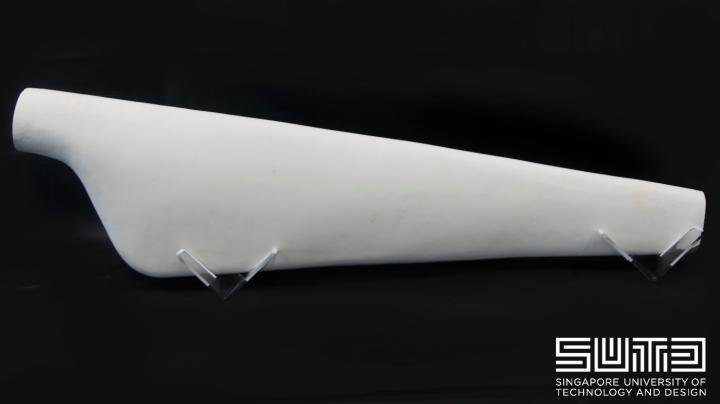| 1.2m, 5.2kg turbine blade fabricated entirely with cellulose and chitosan, the most ubiquitous biopolymers on earth and produced in large amounts in almost every ecosystem. Both ingredients are obtained from by-products of the industry, resulting in production with negative ecological footprint. Image courtesy of Singapore University of Technology and Design. |
Looking beyond plant life, we can find biopolymers in the tougher parts of fungi, mollusks, arthropods, crustaceans and bugs. Chitin is a glucose-derived polymer that makes up cell walls, scales, beaks, shells and exoskeletons in the aforementioned creatures and has been used to thicken paper, as well as food. Because it is found in excess when it comes to crustacean waste, it is increasingly looked to for a growing number of applications, including as a fertilizer to activate plant defense mechanisms. A related polymer is chitosan, obtained from chitin treated with an alkaline substance, like sodium hydroxide.
Though chitin- and chitosan-based plastics have been developed, industrial scale production of the materials has yet to be developed—not that plastic production should always be “industrial scale”. One startup called The Shellworks is working on what seems to be fairly small-scale chitin plastic production. There are also a number of research projects in the works dedicated to 3D printing chitin materials, as well as Chitinous, a startup spun-out of Singapore University of Technology and Design based on some pretty interesting research combining chitin and cellulose.
Source: 3DPrint.com
Click here to read the full article.

